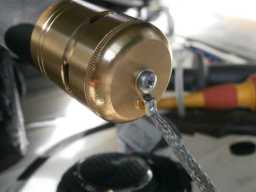 |
竿の底部が金属だったので底面から給電してみた Since the bottom of the rod was metal, I tried to supply power from the bottom |
通常カーボン製の物はアンテナに不向きと言われています、ネットで検索すると中にはそのまま普通に使えると言うのも在ります
カーボンがエレメントとして普通に使えるのであれば こんなに良いことは在りません そこで 実際に試してみました
Normally, carbon fiber is said to be unsuitable for antennas, and some
people say that they can be used normally as they are when searching on
the net
If carbon can be used normally as an element, there is nothing like this. So I actually tried it.
 |
竿の底部が金属だったので底面から給電してみた Since the bottom of the rod was metal, I tried to supply power from the bottom |
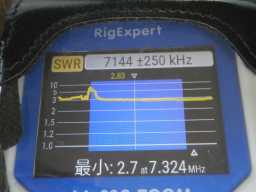 |
まったく電波が乗らない 竿本体と繋がっていないのかも?? No radio waves at all Maybe it is not connected to the rod body? ?? |
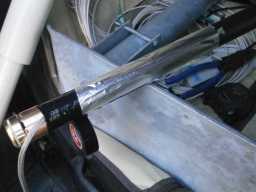 |
竿の本体に同軸の網線を添えアルミフォイルで巻いて給電してみた I attached a coaxial net wire to the main body of the rod and wrapped it with aluminum foil to supply power. |
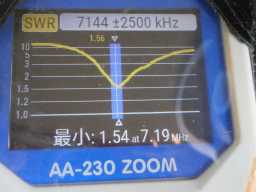 |
今度は、ちゃんとディプ点が現れた が 竿の長さに対して周波数が高すぎる 竿の長さは調整していないので、本来はもっと下に来るはず?? This time, the dip point appeared properly, but the frequency is too high due to the length of the rod I haven't adjusted the length of the rod, so it should come lower. ?? |
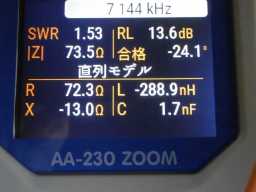 |
え!え! インピーダンス73.5Ω?? 通常35位のはず と言うことは導体ではなく抵抗があるということ? Huh! Huh! Impedance 73.5Ω? ?? Normally it should be 35th place, does it mean that there is resistance, not a conductor? |
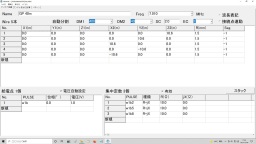 |
家に帰りMMANAでシュミレートしてみた 10Ωを3か所 I went home and tried to simulate with MMANA 10Ω in 3 places |
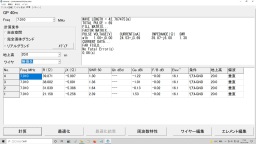 |
結果 下から0Ω 10Ω 20Ω 30Ω これでも73には成らないのでかなり抵抗成分が在るのだろう ゲインの所見るとかなり落ちている As a result, 0Ω, 10Ω, 20Ω, 30Ω from the bottom, even this does not reach 73, so there may be a considerable resistance component. Looking at the gain, it has dropped considerably |
以上の事を勘案すると移動用には不向き ただ 常設用には外部にアルミフォイル等を巻き付けて使用すれば グラスロッドより強度があるので良いかもしれない
Considering the above, it is not suitable for moving. However, if you use it by wrapping aluminum foil etc. on the outside for permanent installation, it may be better because it is stronger than the glass rod.
最近 FBのアンテナサイト見ていると カーボンアンテナに挑戦している人が結構います
で 色々調べてみると カーボンの含有率がかなり違うようです 釣り竿にも硬調と硬々調が在り 「カーボン含有率」硬調は80%程度 硬々調は97% 等種類が在る様です
私たちが無線のアンテナとして使用するには 「カーボン含有率」の高い物を選んで使用すれば 実用に成るかもしれません
Looking at the FB antenna site recently, there are quite a few people who are trying carbon antennas. <BR>
It seems that he has a considerably different carbon content when he investigates variously. It seems that there are also hard and hard tones in fishing rods, and there are various types such as "carbon content" hard tones of about 80% and hard tones of 97%. <BR>
For us to use as a wireless antenna, it may be practical if we select and use one with a high "carbon content".